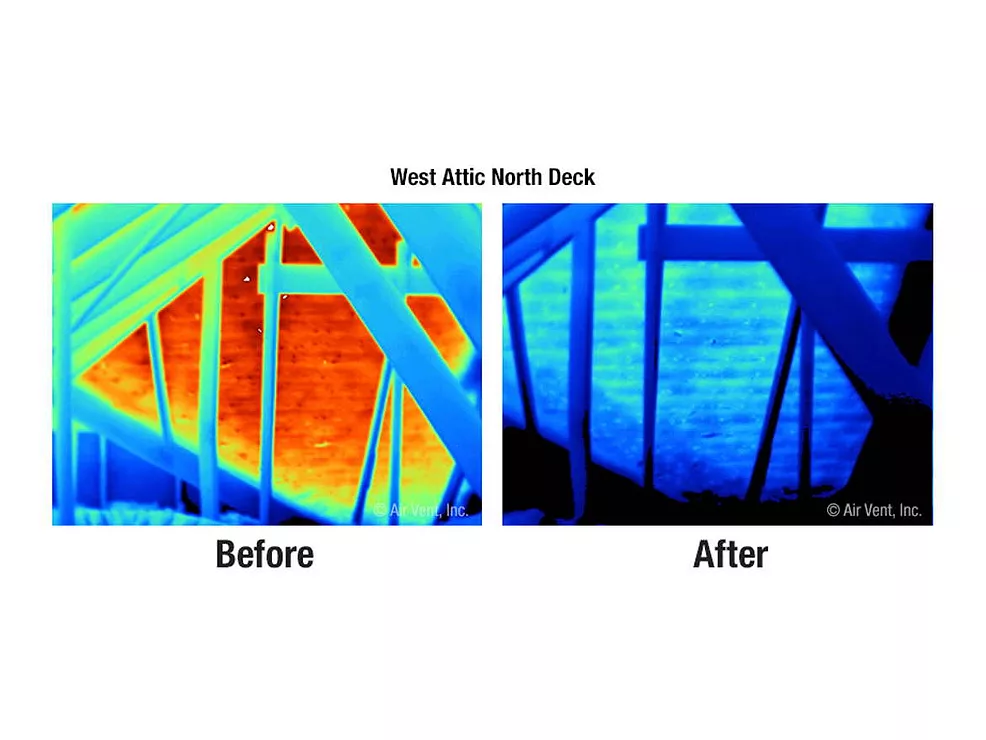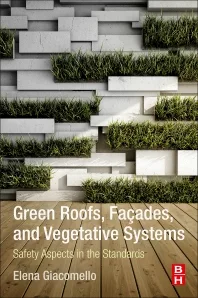Cool Roofs 101
As global interest has increased in passive, energy-saving technologies, cool roofs have received a significant boost in awareness and research over the past year. In both commercial and residential applications, people are discovering the comfort, energy efficiency and climate change mitigation benefits of cool roofs.

As global interest has increased in passive, energy-saving technologies, cool roofs have received a significant boost in awareness and research over the past year. In both commercial and residential applications, people are discovering the comfort, energy efficiency and climate change mitigation benefits of cool roofs. Several code bodies and green building programs are catching on as well, with more energy codes specifying cool roof standards. Cool roofs are moving into the spotlight and emerging technologies are pushing the entire industry to a sustainable and energy-efficient future. With heightened demand for this simple yet effective product, several tools have been created to help contractors, building owners and architects specify cool roofs.
Solar reflectance and thermal emittance are the two key metrics determining how “cool” a roof will stay by its ability to reflect solar energy and emit absorbed heat. Solar reflectance and thermal emittance will appear as a value between 0 and 1, with a higher value signifying a “cooler” roof. Solar Reflectance Index (SRI) is a third metric that is calculated using a product’s solar reflectance and thermal emittance values. It is measured on a scale of 0 to 100 with a higher number symbolizing a more energy-efficient roof. SRI is sometimes used by code bodies or green building programs in place of solar reflectance and thermal emittance as a single-value alternative. Cool roof standards often specify higher reflectance requirements for low-slope, flat rooftops versus steep-slope, pitched rooftops. This difference in values is due to the energy impact the surface type faces, as the flat surface of a low-slope rooftop is exposed to greater solar radiation than a pitched roof.
Another factor in which roofing products are unique is that they are exposed to outdoor conditions that may alter the energy performing ability of the product. Each product is therefore tested initially as available straight off the shelf, as well as after it has been weathered by outdoor elements. A study by the Oak Ridge National Laboratory and DLR consultants found that the loss of effectiveness of solar reflectance for most roof types leveled out at around three years, so it is an industry standard to test roofing materials after three years of aging to determine their aged value.1 Code bodies sometimes reference this aged value, as it more accurately reflects the performance of the roof through its life cycle.
The Cool Roof Rating Council (CRRC) is a third-party rating program that works with manufacturers to rate their products’ solar reflectance and thermal emittance. The Rated Products Directory is a free online database of roofing products rated by the CRRC (www.coolroofs.org). Code bodies and voluntary green building programs define a cool roof by specifying a minimum value for initial and aged solar reflectance, thermal emittance and SRI, or a combination thereof. The CRRC does not set minimum standards for products to be listed on its Rated Products Directory, but provides unbiased and credible ratings for all products. You can search through more than 2,000 products by categories such as material type, color or manufacturer. You can even search by minimum initial or aged solar reflectance, thermal emittance or SRI value in order to fine-tune your search to products that meet a specific code or program standard.
While code bodies set cool roof minimum standards as guidelines, many people find it more realistic to specify a cool roof based on quantifiable benefits. The U.S. Department of Energy (DOE) and the Environmental Protection Agency (EPA) have both created cool roof calculators to determine energy and monetary savings based on climate, building size, HVAC equipment and other important factors.
Although they may seem like conflicting technologies, cool roofs can be complimentary to solar photovoltaic panels. According to the DOE, a cool roof can keep the roof surface 50 percent cooler than a dark roof under the same conditions.3 Solar panels may perform more efficiently and for a longer lifespan under the cooler conditions provided by a cool roof. Panels by California solar photovoltaic manufacturers Solyndra have even been developed with curved surfaces to take advantage of light refracted off the cool roof.4
The Lawrence Berkeley National Laboratory’s Heat Island Group is conducting research on the effects of dirt and algae on the roof surface over time, and it is working to develop an accelerated aging process. This can significantly decrease the aged testing timeline, allowing roofing manufacturers to design and improve product formulas without waiting three years for the aged performance. The Heat Island Group is also working on a self-cleaning surface for roofing materials to reduce the effects of weathering on solar reflectance values. The scientists at United Environment and Energy LLC are developing a coating that can recognize temperature changes to either reflect or absorb solar energy depending on what would be more advantageous for the building.5 The coating is created using waste cooking oil from restaurants and can be adapted to different climates with preset temperature thresholds. A team at the Massachusetts Institute of Technology has focused on a similar concept, designing a roof tile that changes colors according to temperature.6 The tiles are made of common polymers encapsulated by a clear plastic top layer and black back layer. These are just a few examples of new technologies that are pushing roofing materials to have the ability to maintain high-performance after weathering while decreasing both cooling and heating loads for a building.
Despite the benefits of cool roofing, it is still a ways off from being adopted as a standard building practice. In the U.S., it faces barriers from misconceptions, aesthetic design concerns and moisture issues caused by non-comprehensive installations. Yet, cool roofing is a simple design measure that can provide significant energy savings and environmental rewards. The Lawrence Berkeley National Laboratory’s Heat Island Group estimates that buildings with cool roofs use up to 40 percent less cooling energy than buildings with dark colored roofs.7 A designer specifying a rooftop now has several resources available to make informed and confident cool roof choices. With increasingly rigorous roofing code and program standards, and promising emerging technologies on the horizon, cool roofs are quickly becoming one of the most effective ways to save energy and help mitigate global warming.
ENERGY STAR program: Provides a list of products that meet a minimum solar reflectance of 0.65 for initial and 0.50 for aged low-slope roofs and an initial solar reflectance of 0.25 and aged of 0.15 for steep-slope roofs.
LEED 2009 Rating Systems for New Construction, Core and Shell, Schools, and Existing Buildings: A credit may be achieved by specifying a new or existing roof that has an initial SRI of greater or equal to 78 for low-slope roofs and 29 for steep-slope roofs.
Green Building Initiative’s Green Globes program: Offers credit for a cool roof of an SRI of 78 for low-slope and 29 for steep-slope roofs.
2: The Cool Roof Rating Council. (March/April 2009) What’s So Cool About Cool Roofs? GreenSource. Web. January 6 2011. <http://continuingeducation.construction.com/article.php?L=68&C=488&P=1>
3: http://www1.eere.energy.gov/femp/pdfs/coolroofguide.pdf
4: www.solyndra.com
5: www.sciencenews.org/view/generic/id/57485/title/Cool_roof_coating_Mechanism_kept_under_wraps
6: www.greentechmedia.com/articles/read/mit-team-invents-color-changing-roof-tiles
7: http://heatisland.lbl.gov/CoolRoofs

Courtesy of CRRC.
As global interest has increased in passive, energy-saving technologies, cool roofs have received a significant boost in awareness and research over the past year. In both commercial and residential applications, people are discovering the comfort, energy efficiency and climate change mitigation benefits of cool roofs. Several code bodies and green building programs are catching on as well, with more energy codes specifying cool roof standards. Cool roofs are moving into the spotlight and emerging technologies are pushing the entire industry to a sustainable and energy-efficient future. With heightened demand for this simple yet effective product, several tools have been created to help contractors, building owners and architects specify cool roofs.
Cool Roof Resources
As there are thousands of product options just for cool roofing, specifying an appropriate roof can be a daunting task. Cool roofs are available in all colors for virtually every roofing type, although white is still the most efficient option. You can gauge the energy performance abilities of a roofing product by understanding how a cool roof reflects and emits the sun’s heat back to the sky instead of transferring it to the building below. Once you understand the basic technology of cool roofing, there are several resources available to help you make a confident, informed decision on your next project.Solar reflectance and thermal emittance are the two key metrics determining how “cool” a roof will stay by its ability to reflect solar energy and emit absorbed heat. Solar reflectance and thermal emittance will appear as a value between 0 and 1, with a higher value signifying a “cooler” roof. Solar Reflectance Index (SRI) is a third metric that is calculated using a product’s solar reflectance and thermal emittance values. It is measured on a scale of 0 to 100 with a higher number symbolizing a more energy-efficient roof. SRI is sometimes used by code bodies or green building programs in place of solar reflectance and thermal emittance as a single-value alternative. Cool roof standards often specify higher reflectance requirements for low-slope, flat rooftops versus steep-slope, pitched rooftops. This difference in values is due to the energy impact the surface type faces, as the flat surface of a low-slope rooftop is exposed to greater solar radiation than a pitched roof.
Another factor in which roofing products are unique is that they are exposed to outdoor conditions that may alter the energy performing ability of the product. Each product is therefore tested initially as available straight off the shelf, as well as after it has been weathered by outdoor elements. A study by the Oak Ridge National Laboratory and DLR consultants found that the loss of effectiveness of solar reflectance for most roof types leveled out at around three years, so it is an industry standard to test roofing materials after three years of aging to determine their aged value.1 Code bodies sometimes reference this aged value, as it more accurately reflects the performance of the roof through its life cycle.
The Cool Roof Rating Council (CRRC) is a third-party rating program that works with manufacturers to rate their products’ solar reflectance and thermal emittance. The Rated Products Directory is a free online database of roofing products rated by the CRRC (www.coolroofs.org). Code bodies and voluntary green building programs define a cool roof by specifying a minimum value for initial and aged solar reflectance, thermal emittance and SRI, or a combination thereof. The CRRC does not set minimum standards for products to be listed on its Rated Products Directory, but provides unbiased and credible ratings for all products. You can search through more than 2,000 products by categories such as material type, color or manufacturer. You can even search by minimum initial or aged solar reflectance, thermal emittance or SRI value in order to fine-tune your search to products that meet a specific code or program standard.
While code bodies set cool roof minimum standards as guidelines, many people find it more realistic to specify a cool roof based on quantifiable benefits. The U.S. Department of Energy (DOE) and the Environmental Protection Agency (EPA) have both created cool roof calculators to determine energy and monetary savings based on climate, building size, HVAC equipment and other important factors.
- The DOE Cool Roof Calculator (www.ornl.gov/sci/roofs+walls/facts/CoolCalcEnergy.htm) offers savings estimates for small- and medium-sized facilities with flat roofs.
- The EPA Roof Savings Calculator (www.roofcalc.com) is designed for both residential and commercial buildings, and it allows you to define information about your existing and proposed roofs for comparison.
What's Next for Cool Roofs
In July 2010, Secretary of Energy Steven Chu launched an initiative to install cool roofs on DOE and government buildings. Recognition of the benefits of cool roofs, like the DOE initiative, and the development of emerging technologies promises to transform the future marketplace. Several laboratories, universities and companies are already conducting research on new cool roof products, from self-cleaning to thermally sensitive materials to solar panels that take advantage of cool roofs.Although they may seem like conflicting technologies, cool roofs can be complimentary to solar photovoltaic panels. According to the DOE, a cool roof can keep the roof surface 50 percent cooler than a dark roof under the same conditions.3 Solar panels may perform more efficiently and for a longer lifespan under the cooler conditions provided by a cool roof. Panels by California solar photovoltaic manufacturers Solyndra have even been developed with curved surfaces to take advantage of light refracted off the cool roof.4
The Lawrence Berkeley National Laboratory’s Heat Island Group is conducting research on the effects of dirt and algae on the roof surface over time, and it is working to develop an accelerated aging process. This can significantly decrease the aged testing timeline, allowing roofing manufacturers to design and improve product formulas without waiting three years for the aged performance. The Heat Island Group is also working on a self-cleaning surface for roofing materials to reduce the effects of weathering on solar reflectance values. The scientists at United Environment and Energy LLC are developing a coating that can recognize temperature changes to either reflect or absorb solar energy depending on what would be more advantageous for the building.5 The coating is created using waste cooking oil from restaurants and can be adapted to different climates with preset temperature thresholds. A team at the Massachusetts Institute of Technology has focused on a similar concept, designing a roof tile that changes colors according to temperature.6 The tiles are made of common polymers encapsulated by a clear plastic top layer and black back layer. These are just a few examples of new technologies that are pushing roofing materials to have the ability to maintain high-performance after weathering while decreasing both cooling and heating loads for a building.
Despite the benefits of cool roofing, it is still a ways off from being adopted as a standard building practice. In the U.S., it faces barriers from misconceptions, aesthetic design concerns and moisture issues caused by non-comprehensive installations. Yet, cool roofing is a simple design measure that can provide significant energy savings and environmental rewards. The Lawrence Berkeley National Laboratory’s Heat Island Group estimates that buildings with cool roofs use up to 40 percent less cooling energy than buildings with dark colored roofs.7 A designer specifying a rooftop now has several resources available to make informed and confident cool roof choices. With increasingly rigorous roofing code and program standards, and promising emerging technologies on the horizon, cool roofs are quickly becoming one of the most effective ways to save energy and help mitigate global warming.
Cool Roof Codes and Voluntary Programs
California Title 24: Low-slope products must meet aged reflectance values of 0.55, steep-slope products must meet aged reflectance values of 0.20, heavy mass steep-slope products must meet aged reflectance values of 0.15, and all products must meet 0.75 for emittance.ENERGY STAR program: Provides a list of products that meet a minimum solar reflectance of 0.65 for initial and 0.50 for aged low-slope roofs and an initial solar reflectance of 0.25 and aged of 0.15 for steep-slope roofs.
LEED 2009 Rating Systems for New Construction, Core and Shell, Schools, and Existing Buildings: A credit may be achieved by specifying a new or existing roof that has an initial SRI of greater or equal to 78 for low-slope roofs and 29 for steep-slope roofs.
Green Building Initiative’s Green Globes program: Offers credit for a cool roof of an SRI of 78 for low-slope and 29 for steep-slope roofs.
Endnotes
1: Roodvoets, D., Desjarlais and W. Miller, (April 2004). Long Term Reflective Performance of Roof Membranes. RCI Annual Conference2: The Cool Roof Rating Council. (March/April 2009) What’s So Cool About Cool Roofs? GreenSource. Web. January 6 2011. <http://continuingeducation.construction.com/article.php?L=68&C=488&P=1>
3: http://www1.eere.energy.gov/femp/pdfs/coolroofguide.pdf
4: www.solyndra.com
5: www.sciencenews.org/view/generic/id/57485/title/Cool_roof_coating_Mechanism_kept_under_wraps
6: www.greentechmedia.com/articles/read/mit-team-invents-color-changing-roof-tiles
7: http://heatisland.lbl.gov/CoolRoofs
Looking for a reprint of this article?
From high-res PDFs to custom plaques, order your copy today!






